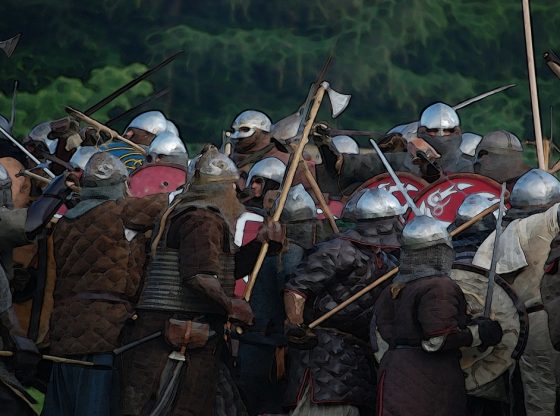
Scandinavians during the Vendel Period and Viking Age perfected the large-scale production of tar, which helped to preserve their ships on voyages of trade and plunder.
A new study by Andreas Hennius from the Department of Archaeology and Ancient History at Uppsala University in Sweden documents the discovery of large tar-producing pits in the Swedish province of Uppland.
Over the past 15 years, archaeologists have uncovered a surprising number of these extra-large pits, carbon dated to between 680 and 900 CE. This both pre-dates and coincides with the Viking Age (roughly 750 to 1050 CE).
The large production facilities seem to originate in the so-called Vendel Period (550-790), a period in Scandinavian history that comes between the Migration Period and the Viking Age. This period was significant epoch at the beginning of great upheaval and future cultural development in Scandinavia. Some curiosa is that the period is said to have very much influenced J.R.R Tolkien in writing the Lord of the Rings, and indeed Peter Jackson in the film adaptation of Rohirrim as Vendel Age Swedish warriors making them “Vikings on horseback”.
When Andreas analyzed the sites and ages of the tar pits of Sweden, he found that furnaces dated to between 100 and 400 CE were small and located in settlements. But the furnaces dated at or after the end of the seventh century CE were much bigger and were situated near forests, providing easy access to timber.
These pits were enormous in size, capable of producing 200 to 300 liters (50 to 80 gallons ) of tar during each production cycle. The discovery shows that Vendel era and Viking era Scandinavia had acquired the capacity to produce tar at industrial-scale levels. Hennius refers to these facilities as “forest factories for tar production.”
The Scandinavians used this tar to seal and protect structures made of wood, such as boats and longships, and to waterproof sails. But the level of tar production seems excessive, as it is surely more than a single household would ever need.
Hennius, therefore, argue that it is very much consistent with developments in Viking Age shipbuilding and maritime expansion. The shifts in size and location of tar pits took place as people in Norse lands adopted the sail and began making long sea expeditions.

To construct a single longship, an estimated 500 liters (132 gallons) of tar is needed, in addition to about 100 oak trees, and 1,600 hours of manual labor.
Reference:
Andreas Hennius, Viking Age tar production and outland exploitation https://doi.org/10.15184/aqy.2018.22 Published online: 26 October 2018











![OpenAI. (2025). ChatGPT [Large language model]. https://chatgpt.com](https://www.illustratedcuriosity.com/files/media/55136/b1b0b614-5b72-486c-901d-ff244549d67a-350x260.webp)
![OpenAI. (2025). ChatGPT [Large language model]. https://chatgpt.com](https://www.illustratedcuriosity.com/files/media/55124/79bc18fa-f616-4951-856f-cc724ad5d497-350x260.webp)
![OpenAI. (2025). ChatGPT [Large language model]. https://chatgpt.com](https://www.illustratedcuriosity.com/files/media/55099/2638a982-b4de-4913-8a1c-1479df352bf3-350x260.webp)








